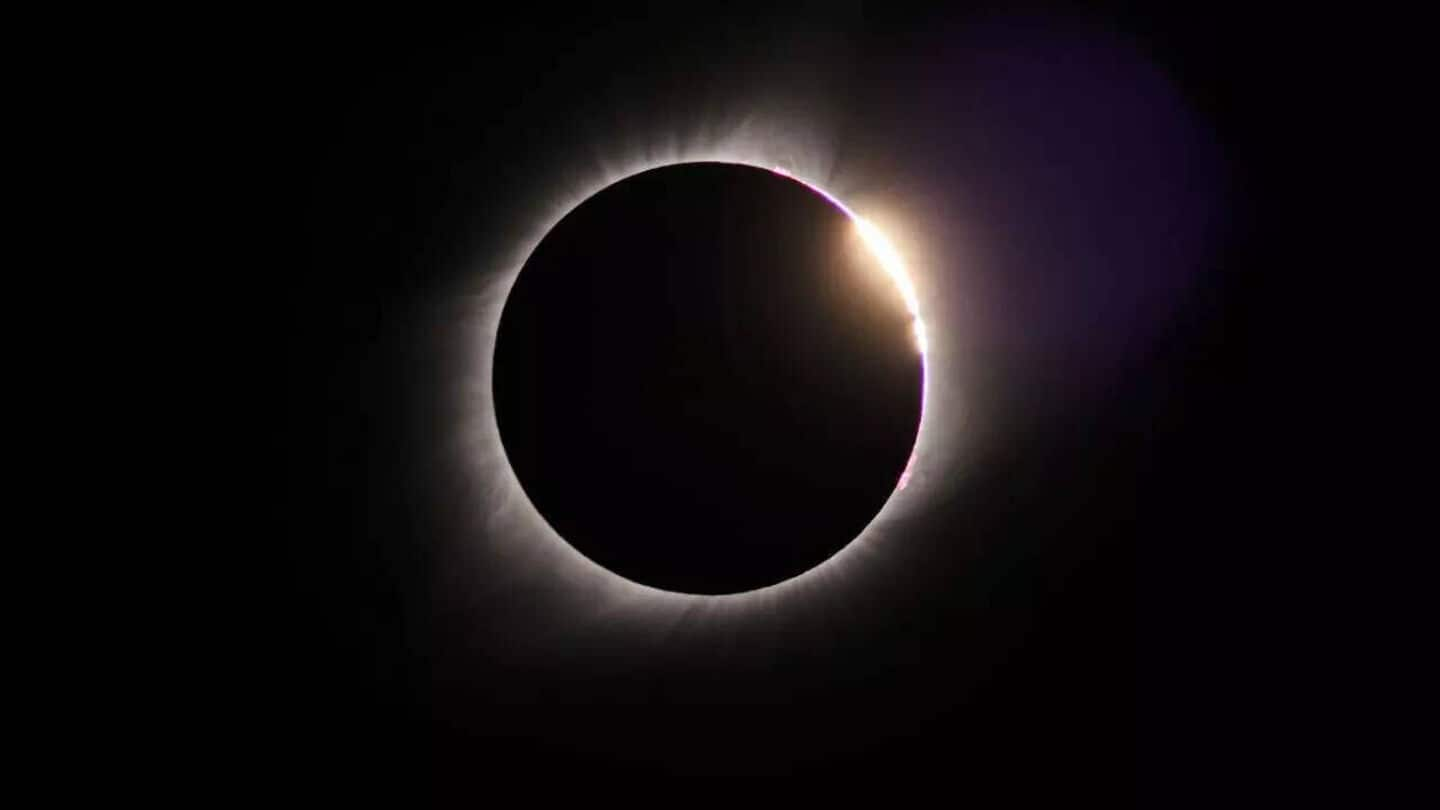
Longest solar eclipse in 100+ years is occurring in 2027
What's the story
On August 2, 2027, a rare total solar eclipse will occur, marking one of the most significant celestial events of this century. The phenomenon will last up to six minutes and 23 seconds in some regions. It is set to be the longest total solar eclipse visible from land between the years 1991 and 2114. The path of totality will traverse parts of Europe, North Africa, and the Middle East.
Eclipse characteristics
Why is this solar eclipse special?
The uniqueness of the 2027 solar eclipse lies in a combination of rare astronomical conditions. On this date, Earth will be at aphelion, its farthest point from the Sun. This makes the Sun appear slightly smaller in the sky. Simultaneously, the Moon will be at perigee or its closest point to Earth, making it look bigger. The path of totality also runs near the equator, where the Moon's shadow moves more slowly across Earth's surface.
Eclipse journey
Path of totality and major cities
The total solar eclipse will start over the Atlantic Ocean and move eastward. It will cut across southern Spain, northern Morocco, Algeria, Tunisia, Libya, and central Egypt, where cities like Luxor may witness over six minutes of total darkness. The path will continue through parts of Sudan, Saudi Arabia, Yemen, and Somalia before exiting over the Indian Ocean, passing close to the Chagos Archipelago.
Viewing schedule
Timing of the eclipse in different countries
The total solar eclipse will occur during early to mid-afternoon hours, depending on the location. In southern Spain, totality is expected between 1:30pm and 2:00pm CEST, while in Egypt and Libya it will peak between 2:00pm and 2:30pm EET. However, India isn't in the path of totality as the eclipse will pass well to its west. Some areas in the westernmost parts may see a minor partial eclipse around sunset, but most of the country won't witness it directly.
Viewing restrictions
Libya and Egypt provide optimal viewing conditions
Major parts of the world will miss this eclipse completely, including India, most of South Asia, North and South America, East Asia, and Australia. Regions like Libya and Egypt are likely to provide optimal viewing conditions due to their dry and clear weather in August. This makes them perfect spots for both local observers as well as international travelers hoping to witness this rare celestial event.